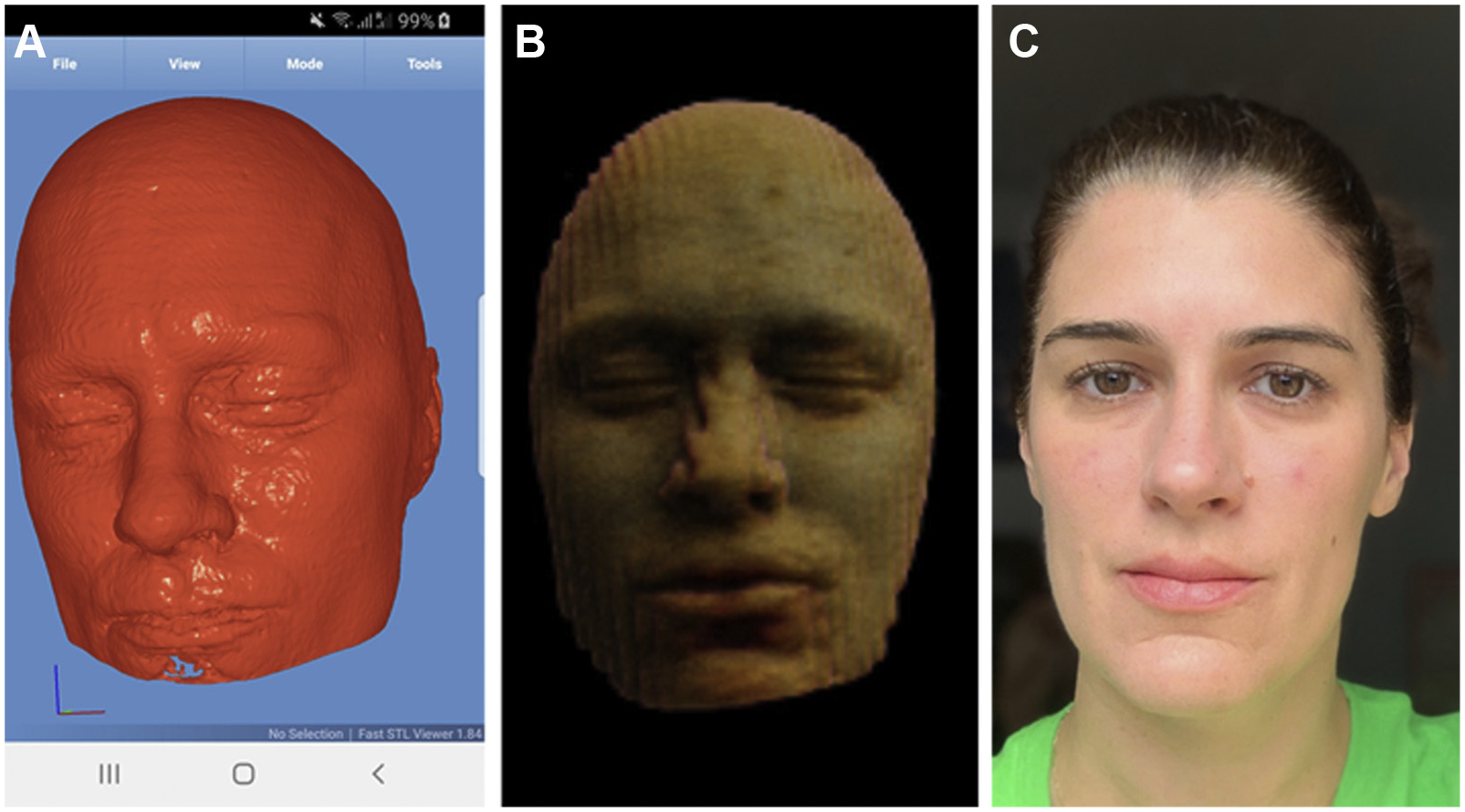Fig 1.

Whereas in the past, dedicated medical imaging software was required, surface rendering of high-resolution (1-mm) medical imaging data is now easily achievable using freely available software such as Fast STL Viewer, an app intended for 3-D printing, shown here in use on an Android mobile device (A). Advances in image postprocessing methods such as slice interpolation allow the generation of a facial likeness even from 2-D, thick-section images (5 mm), albeit with noticeable stairstep artifacts (B). A digital photograph of the same individual (C) shows that identifying people using reconstructed images alone may not be trivial; however, advances in facial recognition algorithms are likely to resolve current shortcomings. Images used with permission.
